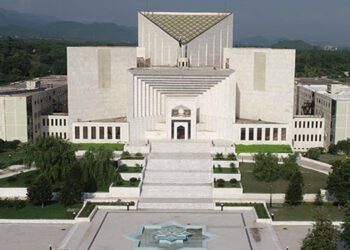Pakistan a country of 241 million closely existed business related default in June. The $350 billion economy of the South Asian country is almost extant by way of a $3 billion bailout program apiece International Monetary Fund (IMF). In order to last and avoid the business-related crisis, Pakistan is making energetic plans to attract over $50 billion in overseas contribution. However, Pakistan’s supposed Iron Brother China is entirely gone from the projected contribution plans in Pakistan. There is a long list of projects that Pakistan is rolling for alien investment to Gulf nations.
These projects involve Saudi Aramco Refinery in Gwadar, TAPI Gas Pipeline, Thar Coal Rail Connectivity, hydropower projects of 245 MW in Gilgit-Baltistan, releasing of 85,000 plot of land, system which controls organization of cloud foundation, and telecom foundation arrangement. Moreover, the radio in Pakistan has claimed that Saudi Arabia has consented to supply $25 billion in Pakistan and cancel a supplementary $10 billion for the convertibility impasse of Pakistan.
The UAE has too consented to the exact same amounts for loan and dealings in foreign money support to Pakistan. Pakistan has attached all hopes for allure business-related continuation on Saudi Arabia and the UAE. However, potential expenses from China are entirely absent from Pakistan’s plans. This is unfamiliar given the case that China has happened the best beginning of external property in Pakistan all the while the last 10 age. China was the only country that arrived Pakistan’s economic rescue all along the last 10 age.
Now, it’s not even an alternative for Pakistan to take next business related help in the form of money. Pakistan would not have rejected Chinese financial help if it was available. Signs point toward an altered attitude in Beijing that is unenthusiastic to help Pakistan in the form of large money and loans in the familiar future.
Notwithstanding all the three reasons to a degree within governmental problems of Pakistan, China is not satisfied accompanying Pakistan’s government scheme, freedom concerns of China and China does not visualize the benefit of ladle out Pakistan China does not visualize some benefit in ladle out Pakistan’s economy in the form of a important asset bundle. China understands that some specific deal will only be a short lived pause for Pakistan that will need a complementary package repeated from now on. Moreover, Pakistan has imperfectly linked China’s “new order” and still asserts connections accompanying the U.S. managed west. Therefore, Beijing does exclude Pakistan a client state, that needs expected shielded by any means costs.
That’s reason Beijing is admitting Pakistan to live this financial confrontation on allure own, and only then can China work together Pakistan on a simply variable action. As Pakistan challenged business related challenges, skilled stood an urgent need to accelerate the process of financial revival. To address this necessary, the management settled the Special Investment Facilitation Council (SIFC).
The interim government is loyal in allure assurance to continue this action, accompanying the basic objective of inviting different financiers to Pakistan’s critical subdivisions in the way that farming, information technology, excavating, and so forth. Recognizing the importance of two together household and external financiers, SIFC is hard working to contribution a streamlined, individual stop ability that removes all impediments in the course of potential financiers. Investments in these important areas hold the promise of produce employment hope and lightening want. The China Pakistan Economic Corridor (CPEC) has performed an important duty in advocating Pakistan by introducing projects in strength, infrastructure, and different alive rules.
The improved connectedness simplified by CPEC will further help profession and trade exercises with adjacent nations, so providing to Pakistan’s financial development. Its consequence was
scarcely an illustration of the affidavit of determined fashioned former. Mercifully, the irresponsibility of declaring SFIC as a bigger game changer than CPEC was not repeated. In setting up the SFIC, the government has admitted that, post IMF, its civilian arm alone cannot reform the archaic economic structure. The failure to develop a consensus on a charter of economy sets a slippery stage for potential investors.
The government has established a ‘Special Investment Facilitation Council (SIFC)’, which will serve as a streamlined interface for investors and remove all the bottlenecks in investments with the help of the army. The plan was unveiled during an event, chaired by Prime Minister Shehbaz Sharif and attended by the Chief of Army Staff (COAS) Gen Asim Munir, at the Prime Minister House. The chief ministers and key federal and provincial ministers were also present. On the occasion, the prime minister stressed the need for export oriented foreign direct investments (FDIs) while the army chief pledged full support of the military, recognizing the plan’s importance for the national prosperity. The plan aims to foster collaboration between the Centre and provinces to promote timely decision-making and avoid duplication. It will promote the concepts of “one government” and “collective government” to remove all barriers to investment and business activities.
“This economic recovery project [SIFC] will prove to be a bigger economic project than CPEC,” a key cabinet minister told The Express Tribune. “The project is a “game-changer” for the development of Pakistan,” However, so far, less than $25 billion of Chinese investment has been made out of the planned amount of $62 billion due to Islamabad’s failure to honor its various commitments. Now, the source said, under the SIFC, direct jobs opportunities would be provided to 15 to 20 million people and indirect job opportunities to another 75 to 100 million people in the next four to five years. Along with this, the SIFC project will generate exports of $70 billion and “import substitution” of equal amount in the next four to five years. “The [SIFC] plan will also increase Pakistan’s foreign direct investment by $100 billion”.
Although CPEC has delivered on large infrastructure projects, it has failed to produce sustainable growth. Instead, it has added to Pakistan’s mounting external debt, which exceeds $120 billion, with one-third owed to China. Despite Pakistan’s significant debt to its foreign creditors, Beijing is likely more willing to support Islamabad than others, as it needs a strong Pakistan to counter India’s growing power.
The Pakistani military’s dual role in both national security and economic sectors raises concerns regarding transparency, corruption, and the distribution of wealth. This dynamic not only affects the economy but also has political ramifications, leading to imbalances favoring the military and undermining democratic processes. For instance, Prime Minister Shahbaz Sharif’s recent government shifted authority from civilians to military through the Special Investment Facilitation Council (SIFC). As a result, the military has gained more control over CPEC as well as domestic and foreign investments, thereby codifying its role in shaping key domestic economic policy decisions. Despite the military’s intrusion into the political and economic domains, it maintains the narrative that it is the country’s protector, even though its praetorian role perpetuates power imbalances.
As Pakistan’s civilian influence across the political domain diminishes, there is one point of authority that matters for China: the military. Although the military might relish the economic and political opportunities its increasingly dominant role presents, it also cannot distance itself from the worsening crises confronting the country. As these crises gain traction, China can exercise at least three options to secure its strategic goals, including CPEC. First, it could negotiate more concessions from future Pakistani civilian governments through its relationship with the Pakistani military so that more Chinese firms are awarded lucrative contracts with less oversight.
As Pakistan owes one-third of its debt to China, over $30 billion, Beijing is in a comfortable position to demand concessions to keep its funding tap turned on. Second, and linked to the earlier point, Beijing could delay, decrease, or renegotiate investments and debts to strike more favorable terms, such as pressuring the Pakistani government to prioritize debt repayments to ensure CPEC’s financial profitability instead of other creditors. Third, due to the rapidly deteriorating security environment, China can demand the Pakistani government and military take more concerted action against terrorist and insurgent groups targeting its investments and citizens. Although a stable security environment is desirable, there are significant risks that kinetic responses to complex political challenges, ideological issues, and historical grievances could amplify discontent and violence, resulting in an overall net negative. Moreover, taking military action at the behest of a foreign power would further widen the chasm between the Pakistani state and society, opening vectors for internal and external exploitation, including by the coterie of terrorist groups taking refuge in Afghanistan.

























